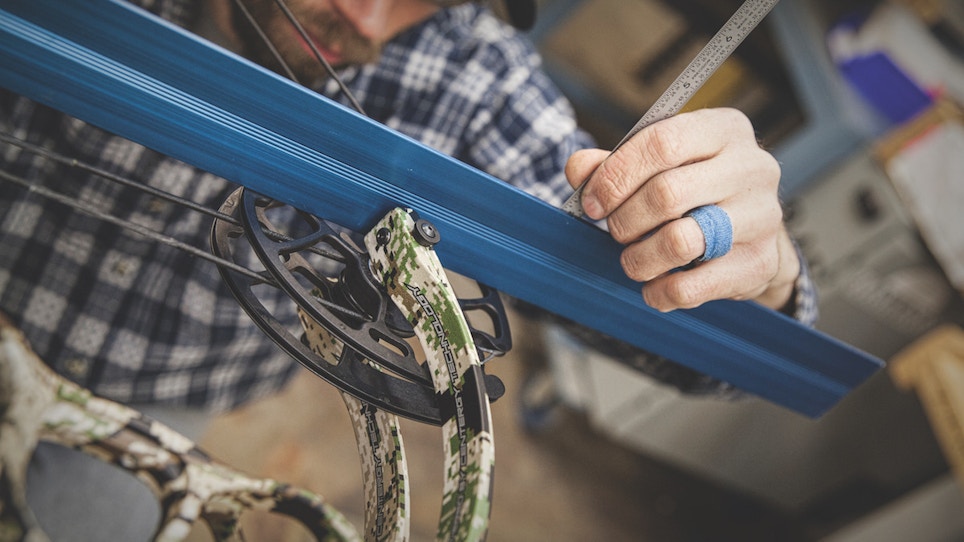Photo courtesy of G5 Outdoors
There are a lot of superlatives thrown around in our industry. Spend some time reading press releases, and your head will be swimming with the number of products that are best in class, offering unsurpassed performance and second-to-none quality.
It doesn’t take long before all those superlatives become fairly meaningless.
At G5, superlatives don’t mean much in the first place. They’re not interested in flowery adjectives; they care about results. As the founder of Grace Engineering, Louis “Leo” Grace, Sr., would say, “You’re only as good as you can measure.”
“Many decades later, that’s still very ingrained in who we are and how we approach things here at G5,” said Nate Grace, Chief Design Officer. “To us, that quote means we must prove what we say we can do or what we say our products/ideas are. It’s an attitude that cuts through the opinions and egos and mental barriers that otherwise would hinder progress in developing measurably better products.”
Measurably better products. That’s what G5 strives to develop. On the G5 Outdoors website, the company’s mission is simple and straightforward: “It is our mission to make bowhunters more effective in the field.”
The company has been carrying out that mission since G5 Outdoors was born in 2000. That was when Lou Grace, Leo’s son, and Lou’s sons Matt and Nate brought to market a new all-steel broadhead that utilized Grace’s patented Metal Injection molding or MonoFlow Technology. It was a broadhead design that blended Grace’s passion for bowhunting with his engineering knowledge. That three-blade broadhead, the Montec, remains one of the company’s best-selling broadheads to this day.
From that first product, the company has moved into additional product categories, offering everything from award-winning peep sights to high-performance compound bows (under the Prime brand). But through it all, the company has never lost sight of its values.
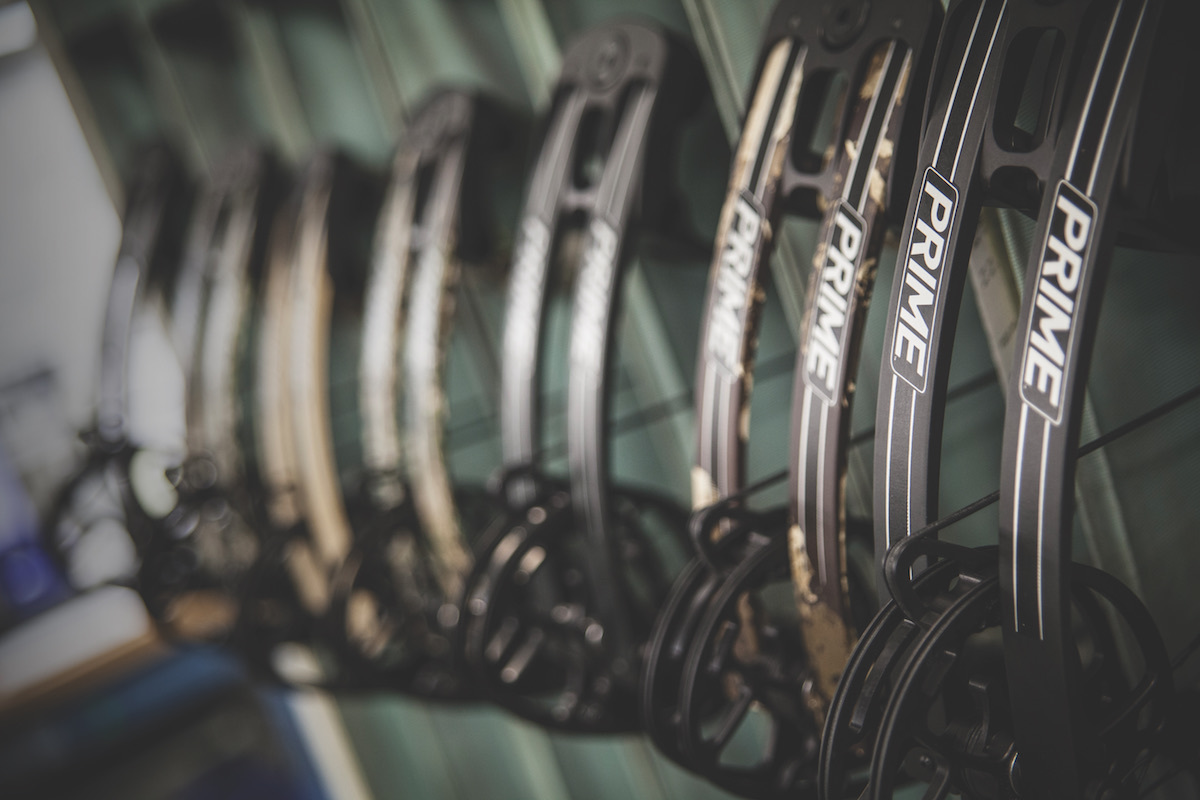
“We believe all our products are unique answers to current problems within archery, executed from the standpoint that quality beats profit and short-term gains will not help us get this third-generation family business to the fourth generation,” explained Nate Grace.
To that end, G5 values inclusivity, soliciting input both internally, from the G5 team, and externally, from pro shooters, retailers and customers.
“Good ideas are good no matter where they come from, and Lord knows we all have the capacity to resolve problems,” Grace explained. “The BMP was spurred on in part by conversations with some retailers and their pro staff shooters. They mentioned the increased frustration they and their customers were having going from field tips to broadheads right before they went on a hunt. That and their ideas to resolve this really kicked the whole project off. Other times those 'non-G5' individuals are much more involved in the development process and can be seen listed as a co-inventor on a patent or even sole inventor.”
We recently had the chance to speak with Nate Grace about the company’s 2018 product line, including the Prime Logic, the Quest Thrive and the cool new BMP field-point technology.
AB: What sets Prime bows apart from other bows on the market?
G5: There are a lot of good bows on the market today. The current archer is very fortunate in that regard. However, Prime is unrivaled in the achievable levels of consistent accuracy — from our Parallel Cam, Flexus Cable Guard system, exotic riser materials and Centergy-focused designs, to our draw-specific cam systems, to the way our bows are created. In fact, the way we create our bows is very unconventional. We do not create our bows in a mass production mindset or even workflow. We have a mindset, and workflow, much more like a custom shop. Every single bow goes through testing and validation, unlike any other bow produced to date. From our 100 Cycle Assurance to our centershot and planarity measurements to the cam lean, draw cycle, speed, noise, vibration and more standard tests that we do on each and every single bow we ship. At the end of the day, we provide our dealers and archers a very unique, premium level experience that begins and ends with accuracy.
AB: What excites you the most about the 2018 Prime Logic?
G5: Internally, I am so proud of how my team here at G5 executed the development of this product with higher goals of quality and performance yet with a shorter timeline than we thought possible.
Externally, the Logic is exciting for us as a new platform from which we can build from over the next seven to 10 years of Prime bows. It is a platform that has fewer issues in manufacturing, design and servicing than our previous platforms. And we believe it allows us new freedoms to develop products at higher levels of accuracy and new, better archer experiences.
For instance, we can reduce overall mass, reduce vibration and reduce noise due to the shorter limbs and straighter riser. The wider cams allow us to offer shorter axle-to-axle models and longer/shorter draw lengths. The new compression axle system allows us to offer smoother draws, increased efficiency and longer product life cycles while reducing the understanding and complexity of servicing this product.
AB: I know split limbs on the Logic are a first for Prime. What drove you in this direction?
G5: We needed to go to wider cams to allow us to offer shorter axle-to-axle models and longer/shorter draw lengths. It was really that simple.
We couldn’t achieve this with solid limbs, though we tried. Solid limbs are by nature the best option for torsional rigidity, which affects nock travel and cam lean, and consistency over long cycle lives. Now, split limbs do have their advantages over solid limbs, but the naturally high torsional rigidity we are accustomed to in solid limbs was the largest hurdle for us to clear when we began to look seriously at split limbs as a viable option. Ultimately, we were able to achieve the same level of torsional rigidity through shorter/wider limbs and our patent-pending compression axle system while improving upon our overall control of nock travel through a wider pocket-to-riser stance and straighter, thus stiffer, riser design.
AB: What’s the purpose of the “Swerve”?
G5: The nock is attached to the string, which is attached to the cam, which is attached to an axle system, which is attached to a limb and pocket system that is attached to the riser. No matter how “stiff” you make a riser, if the top portion of the riser above your grip does not move in unison with the lower portion of the riser below your grip, then your nock travel suffers. The “Swerve” is the only design feature we could develop to accomplish this higher level of nock-travel control without adding mass weight to the overall system, which is why the only competitor bows that can even come close to us in terms of nock-travel control are ¼ pound or heavier than us.
Another note about the riser top and bottom moving in unison is we believe this is the main culprit to the always argued tuning issue, “Do you time your ‘slaved’ cams at brace or full draw?” And it is also the main culprit to dealers spending so much time figuring out how to tune the exact same model bows in different draw lengths and limb poundages.
AB: When it comes to the Quest bow line, how do you go about developing a bow that lives up to your exacting standards that can still be offered at an affordable price?
G5: For us it is quite hard to do this. When we develop Prime bows, cost is usually toward the bottom of the design criteria list. With Quest, it is much higher on that list.
But being a manufacturing company for over 50 years, we leverage that perspective, knowledge, experience and resources to really minimize the effect cost reductions have on quality and performance. It is a progression that has come full circle for us. We started to use cheaper materials and less optimal designs to cut costs back in 2013 to 2016. That really was a bad move on my part because the quality and performance suffered, and therefore customers started to leave the brand. For 2018 we released the Thrive bow with great success so far. And the reason is we got back to the original vision of Quest being the higher-quality, most fun bow to shoot.
AB: Can you tell us a little about the Quest Thrive?
G5: The Thrive is a derivative of one of Prime’s most beloved bow designs thus far: the Rize. We took the riser material — 82X — and the Flexus cable guard and the overall riser design from Rize and melted that with one of our most beloved Quest cam systems — the FLUX. So the Thrive is a high-quality bow that’s super fun to shoot due to its good speed, super-smooth draw cycle and virtually vibration-free shot.
AB: What’s the main purpose behind the 82X aluminum risers on both the Prime and Quest bows?
G5: The stiffness-to-weight, or specific stiffness, is higher than that of our competitors’ 6061 and even 7075 aluminum alloys. This, again, is mainly done to help reduce nock travel in both the horizontal and vertical planes. The stiffer riser also helps reduce vibration and noise, but the control of the nock travel is the main reason.
AB: Let’s talk about the new BMP technology. What was the thinking behind the development of these new practice points?
G5: The level of expectation of consistency and accuracy in archery has risen drastically in the last few years. You add that to the fact that the ranges at which archers are shooting have grown way past 30 to 40 yards. The cost of broadhead-specific targets has steepened. People have less time to prepare for hunts. And finally, add in the fact that the idea of “un-tuning” your bow so the field tips and broadheads impact more similarly is finally becoming negative. There needed to be a new solution.
We came up with new ways to measure arrow/broadhead flight and started to use new tools to test concepts and ideas. This led to us developing a field point that flew more like a broadhead. It might seem backwards, but the truth is if broadheads were cheaper and didn’t cut up targets then they would be used much more than they are. Most people shoot field tips simply to prepare for hunting.
So we developed the Ballistically Matched Point to resolve all these issues.
AB: What kind of engineering and testing went into the DeadMeat broadhead?
G5: It took us almost three years to develop this head. We had to bring in new levels of FEA simulation and prototype machining to design it. We bought and heavily modified a wind tunnel to test and validate. We rethought our standard lab tests of evaluating penetration and the ability of design to open on impact, which in the past was simply high-speed video. Then we used our standard durability drop testing and good old-fashioned field studies.
AB: How did the Torkee broadhead wrench come about?
G5: Lou Grace, my father, came up with that some years ago. He has obviously been the main driver in how we do things here and how we look at and interpret the world of archery and manufacturing, among other things. And his passion to be a better hunter and archer drove the question, “Why do my broadheads come loose, and how do I resolve that?”
So the Torkee came out of that continuous drive. He developed a cheap yet quality torque wrench for broadheads to keep them from coming loose by applying the proper amount of torque, which is 5 to 7 inch/pounds. (He found most archers only apply around 2 to 3 inch/pounds.) Not only does this remove the annoyance of loose broadheads, but having a broadhead torqued onto an arrow properly will also improve the broadhead’s strength and durability while penetrating through the target/animal.
Dealer Contact:
g5customerservice@graceeng.com
(866) 456-8836
2018 Products
The Prime Logic offers the performance of Prime’s Centergy bow in a compact 31-inch axle-to-axle package. Perfect for Western bowhunters or those hunting in tight quarters, the Logic offers a center-grip design with a riser that’s built around a lower center of gravity, all of which reduces pin movement while aiming. (“I felt like I could hold on my spot forever,” reported Archery Business Editor Jace Bauserman after putting the bow through its paces.) A strategically placed curve — the Swerve — ensures the top and bottom portions of the riser move in unison for improved consistency and accuracy. Extra-wide cams eliminate natural lean. The Logic is available in draw lengths from 24 ½ to 30 inches and in draw weights of 40, 50, 60, 65, 70 and 80 pounds. With a mass weight of 4.3 pounds, a brace height of 7 inches and an IBO speed of 330 fps, the Logic is available in a wide range of camo and color options. The Logic retails for $1,199.
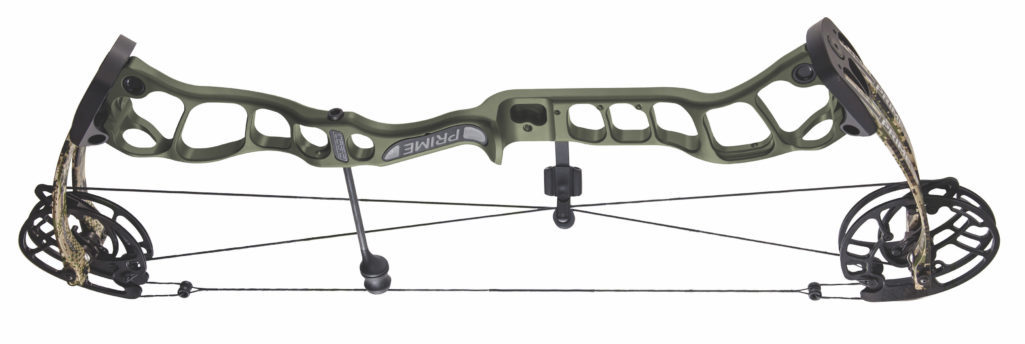
Built on the established Quest platform coupled with patented technology, the new Thrive was designed to bring the fun back to bowhunting. It features the patented Flexis AR adjustable roller guard, 82X aluminum riser and the proven Flux Cam System. Each Thrive comes with a set of five modules for draw-length adjustment from 26 to 31 inches. Measuring 33 ¾ inches from axle to axle, the Thrive comes in draw weights of 50, 60 and 70 pounds and boasts a 7-inch brace height. It weighs 4.3 pounds. The Thrive is available as a bow only for $650 or as a package for $750.
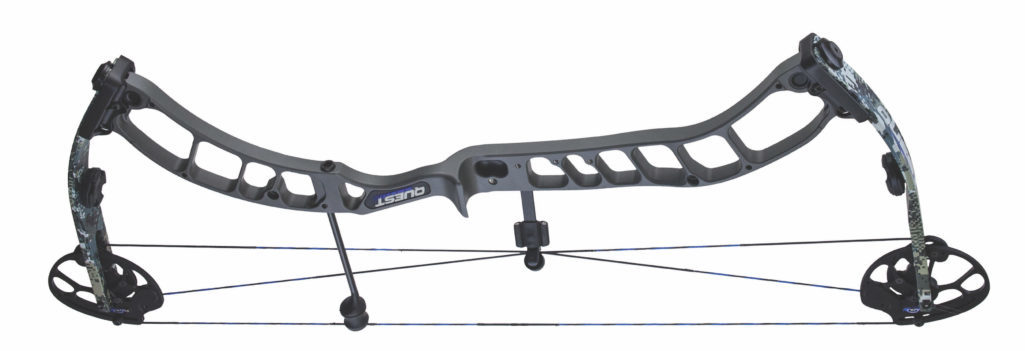
Although many field points and broadheads fly the same at distances out to 20 yards, small flight differences become magnified at greater distances. That means archers who shoot at longer distances have, in the past, needed to retune their bows for broadheads before a hunt. The operative words there are “in the past.” Because now G5’s BMP (Ballistic Matched Points) technology means archers can shoot field points that feature the exact weight distribution, size and arrow dynamics of the corresponding broadhead for perfect practice and boosted confidence in the field. The BMP is available for Dead Meat and Montec broadheads and have an MSRP of $17.95 for a three-pack.
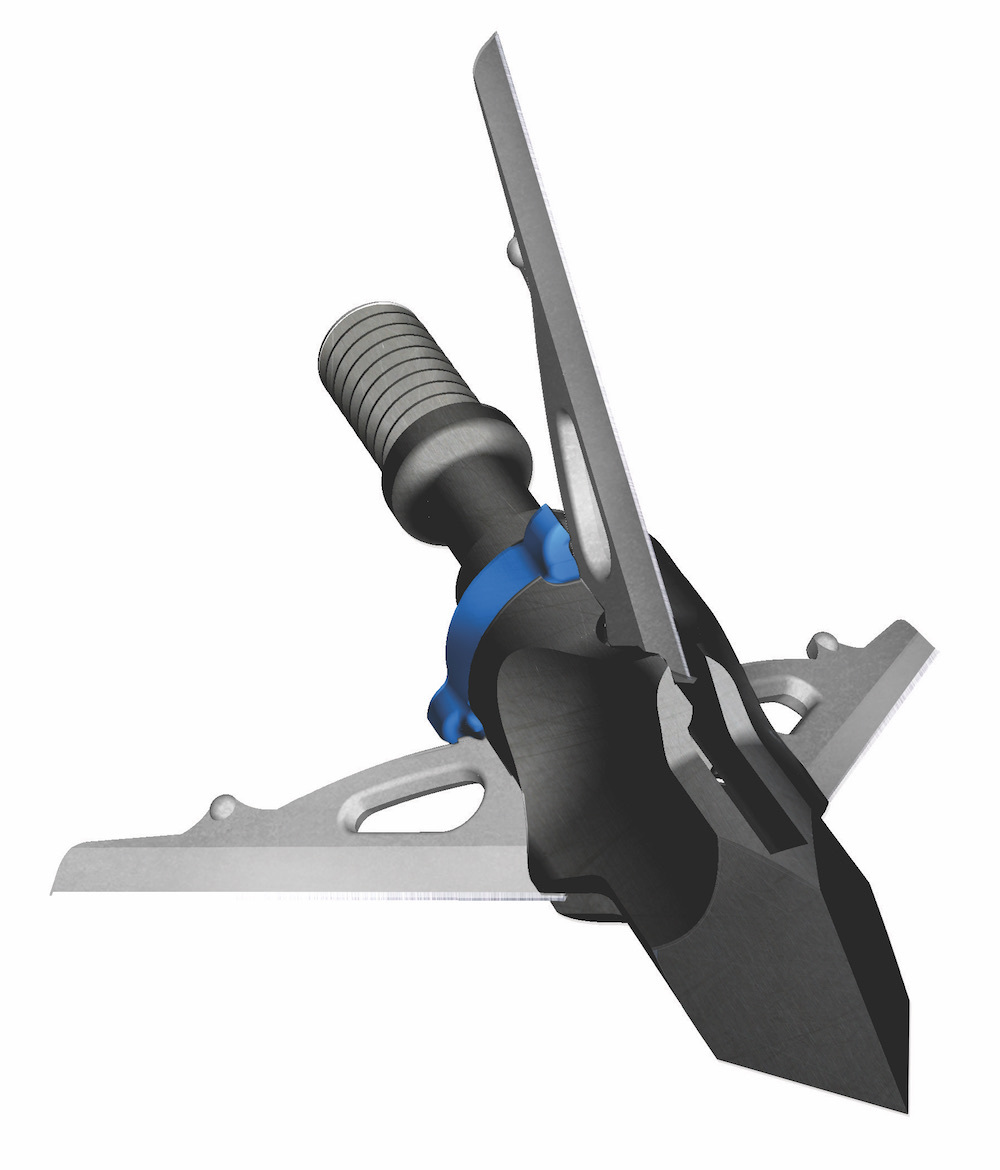
The latest broadhead from G5 is the DeadMeat, a three-blade head designed to fly with field-point accuracy. Constructed from 100 percent stainless steel, the DeadMeat offers a 1 ½-inch cutting diameter for short, easy-to-follow blood trails. The DeadMeat features G5's new SnapLock retaining collar, which creates an audible "snap" when the blades are locked securely in place. These 100 percent spin-tested heads are available in 100- and 125- grain configurations, and in Deep Six models. The DeadMeat has an MSRP of $54.95.
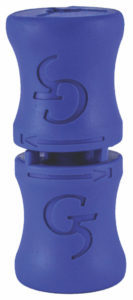
In the interest of solving problems for archers, G5 introduced the Torkee broadhead wrench. This unique wrench provides visual verification that you’ve applied the correct amount of pressure to properly seat your broadhead. Two tabs move closer together as tension is applied to the broadhead. When the tabs touch, you know your broadhead is properly set. It's an easy way to avoid the frustrations of a loose broadhead. The Torque retails for $9.95.
